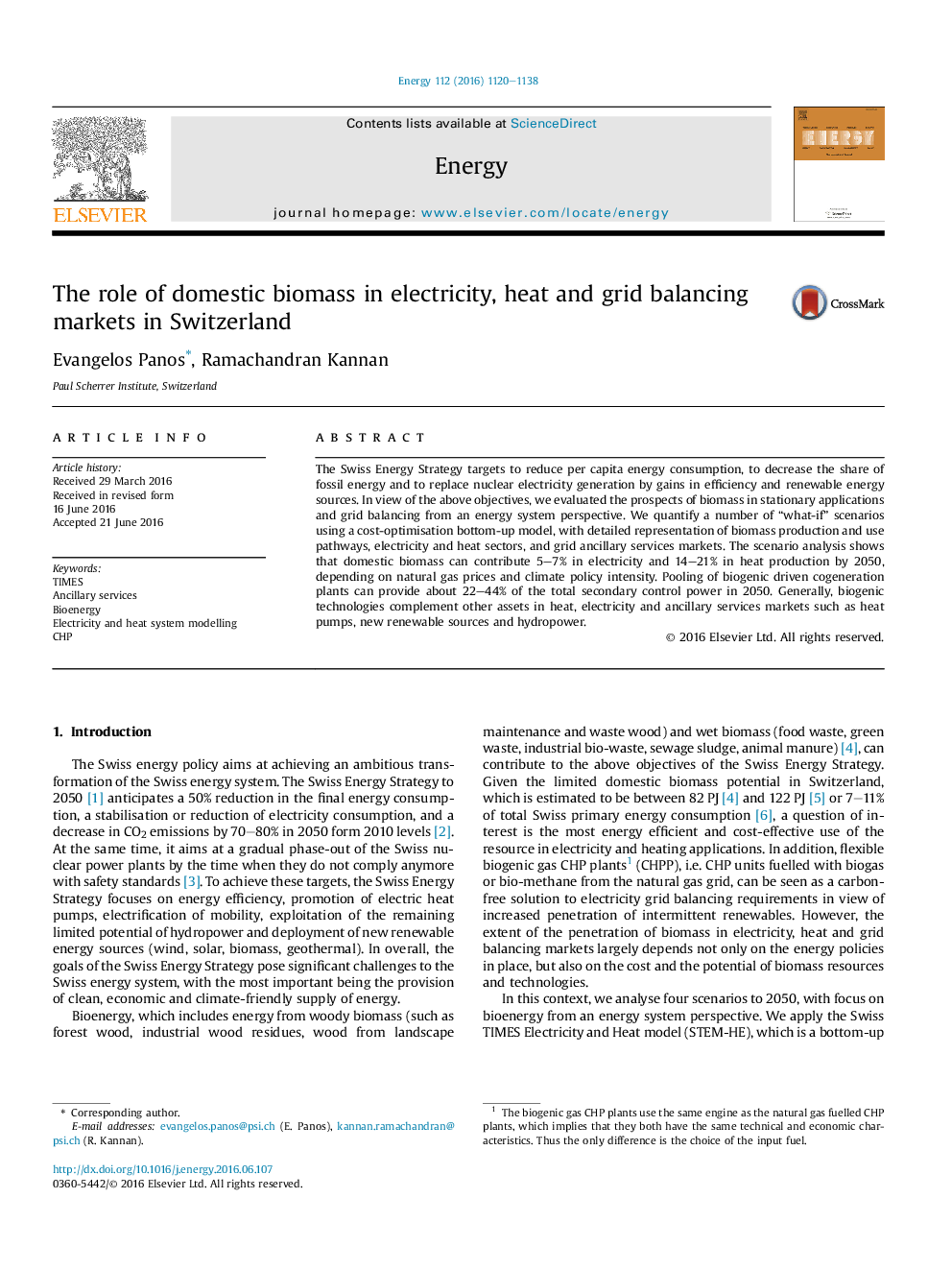| کد مقاله | کد نشریه | سال انتشار | مقاله انگلیسی | نسخه تمام متن |
|---|---|---|---|---|
| 8073165 | 1521436 | 2016 | 19 صفحه PDF | دانلود رایگان |
عنوان انگلیسی مقاله ISI
The role of domestic biomass in electricity, heat and grid balancing markets in Switzerland
ترجمه فارسی عنوان
نقش بیوماس داخلی در بازارهای مالی متعادل کننده برق، گرما و شبکه در سوئیس
دانلود مقاله + سفارش ترجمه
دانلود مقاله ISI انگلیسی
رایگان برای ایرانیان
ترجمه چکیده
استراتژی انرژی سوئیس به منظور کاهش مصرف انرژی سرانه، کاهش سهم انرژی فسیلی و جایگزینی انرژی تولید انرژی هسته ای با افزایش بهره وری و منابع انرژی تجدیدپذیر است. با توجه به اهداف فوق، چشم انداز بیوماس را در برنامه های ثابت و تعادل شبکه از دیدگاه سیستم انرژی ارزیابی می کنیم. ما مقداری از چه چیزی را اندازه می گیریم؟ سناریوها با استفاده از مدل بهینه سازی با هزینه پایین به بالا، با نمایشی دقیق از تولید زیست توده و مسیرهای استفاده، بخش های برق و گرما و بازارهای خدمات جانبی اضافی. تجزیه و تحلیل سناریو نشان می دهد که با توجه به قیمت گاز طبیعی و شدت سیاست های اقلیمی، زیست توده داخلی می تواند 5 تا 7 درصد برق و 14-21 درصد تولید گرما را تا سال 2050 به خود اختصاص دهد. به طور کلی، فن آوری های زیستی محیطی دیگر از دارایی های بازار گرما، برق و خدمات جانبی مانند پمپ های حرارتی، منابع تجدید پذیر جدید و انرژی های آبی را تکمیل می کنند.
موضوعات مرتبط
مهندسی و علوم پایه
مهندسی انرژی
انرژی (عمومی)
چکیده انگلیسی
The Swiss Energy Strategy targets to reduce per capita energy consumption, to decrease the share of fossil energy and to replace nuclear electricity generation by gains in efficiency and renewable energy sources. In view of the above objectives, we evaluated the prospects of biomass in stationary applications and grid balancing from an energy system perspective. We quantify a number of “what-if” scenarios using a cost-optimisation bottom-up model, with detailed representation of biomass production and use pathways, electricity and heat sectors, and grid ancillary services markets. The scenario analysis shows that domestic biomass can contribute 5-7% in electricity and 14-21% in heat production by 2050, depending on natural gas prices and climate policy intensity. Pooling of biogenic driven cogeneration plants can provide about 22-44% of the total secondary control power in 2050. Generally, biogenic technologies complement other assets in heat, electricity and ancillary services markets such as heat pumps, new renewable sources and hydropower.
ناشر
Database: Elsevier - ScienceDirect (ساینس دایرکت)
Journal: Energy - Volume 112, 1 October 2016, Pages 1120-1138
Journal: Energy - Volume 112, 1 October 2016, Pages 1120-1138
نویسندگان
Evangelos Panos, Ramachandran Kannan,
